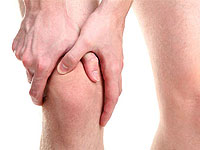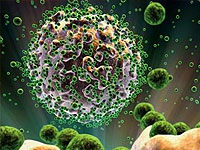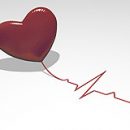Subfebrile temperature in its development takes three stages. The first stage is characterized by an increase in body temperature and heat exchange limit. In the second stage, the temperature is kept on high numbers and only in the third stage the body temperature decreases and comes to normal.
Content
The main stages of the development of subfebrile body temperature
 Three stages in their development takes place. In the first stage of fever - there is an increase in body temperature; In the second stage - the body temperature is kept on high numbers; In the third stage, the temperature decreases.
Three stages in their development takes place. In the first stage of fever - there is an increase in body temperature; In the second stage - the body temperature is kept on high numbers; In the third stage, the temperature decreases.
In the first stage of the fever, there is a limitation of heat transfer, which indicates the narrowing of blood vessels of the skin and in connection with this limitation of blood flow, a decrease in skin temperature, a decrease or termination of sweating. At the same time, heat generation increases, gas exchange increases. Typically, these phenomena are accompanied by common malaise, chills, making pain in muscles, headache.
With the cessation of lifting the body temperature and the transition of fever into the second stage of heat transfer increases and is balastinated with heat-product at the new level. The blood circulation in the skin becomes intense, the skin's pallor is replaced by hyperemia, skin temperature rises. Feeling cold and chills pass, strengthening. The third stage of fever is characterized by the predominance of heat transfer over heat. Blood vessels of the skin continue to expand, sweating increases.
Types of temperature curves when increasing temperature
According to the degree of increasing body temperature, subfebrile (from 37°From up to 38°C), moderate (from 38°From up to 39°C) high (from 39°From to 41°C) and excessive, or hyperpiratory, fever (over 41°WITH). In typical cases, with acute infectious diseases, the most favorable form is a moderate subfebrile fever with daily fluctuation of temperature in the range of 1°WITH.
By type of temperature curves, the following main types of fever are distinguished:
- permanent
- Remiding (Relaxing)
- Interminating (intermittent)
- Perverted
- hectic (depleting)
- wrong
With constant fever, the increased body temperature is held for several days or weeks with daily fluctuations in the range of 1°WITH. This type of fever is characteristic, for example, for bruboral pneumonia, rapid typhoid. With a remitating fever, which is observed in purulent diseases (for example, an exudative pleurite, light abscess), temperature fluctuations during the day reach 2°C and more.
The intermittent fever is characterized by alternating periods of normal body temperature and elevated; It is possible as a sharp, for example in malaria, returning typhoid (return fever) and gradual, for example, during brucellosis (wave-like fever), an increase and decrease in body temperature. With a perverted fever, the morning body temperature is above the evening. Such a type of fever can sometimes be with heavy tuberculosis, tightening sepsis forms. With hectic fever, the flow temperature differences are 3-4°C and occur 2-3 times a day, it is characteristic of severe forms of tuberculosis, sepsis. With irregular fever, there is no definite pattern in daily fluctuations in body temperature, it is most often occurring during rheumatism, pneumonia, flu, dysentery.
Types of fever during illness can alternate or cross one in another. The intensity of the fevering reaction may vary depending on the functional state of the central nervous system at the time of the effects of pyrogenic substances. The duration of each fever stage is determined by many factors, in particular the dose of the pyrogenic substance, the time of its action, disorders arising in the body under the influence of the pathogen agent and.
Fever can end with a sudden and rapid drop in body temperature to normal and even lower (crisis) or gradual slow decrease in body temperature (lysis).









